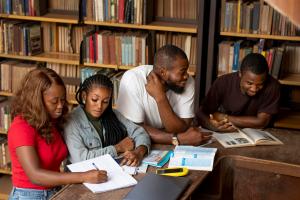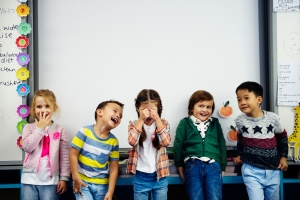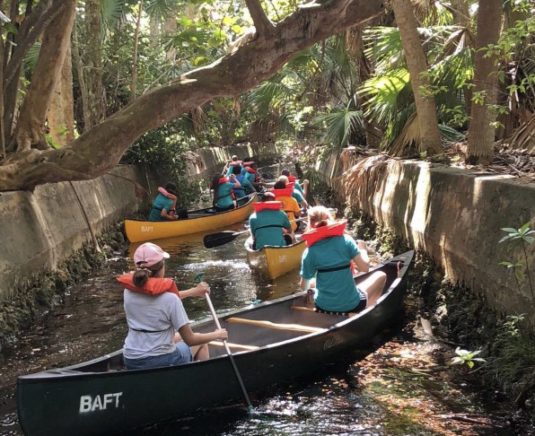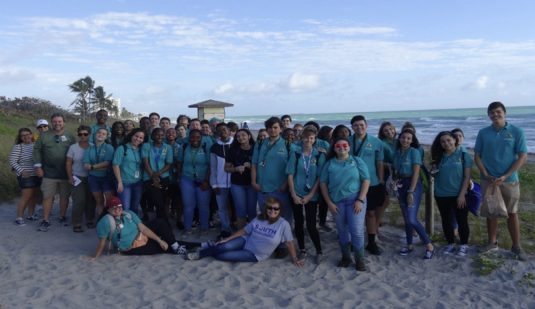Month: April 2022
MDEF Recognizes Demands on Educators, Extends Deadline for 2022

McCarthey Dressman Education Foundation extends funding opportunity deadline to address educational enrichment for a generation impacted by the pandemic.
The Foundation website https://www.mccartheydressman.org includes information about eligibility requirements, program overviews, and previously funded projects. The extended deadline for applications is May 1, 2022.
Over $197K in funding was awarded by McCarthey Dressman Education Foundation for the 2021-2022 school year. According to Sarah J. McCarthey, Chair of the Foundation’s Board of Trustees, grants and scholarships awarded by the Foundation serve as a catalyst in maximizing the skills and creativity of educators at the K-12 levels and in cultivating pioneering approaches to meeting the needs of a generation impacted by the global pandemic.

“We are looking for proposals geared to enrich the education of a generation of learners who have survived the multiple years of dramatic educational change. We know that there are many demands on educators the past several years. Grant submissions have been lower than average and we recognize this as an outcome of the many issues impacting districts, schools and classrooms” noted Professor McCarthey. Successful applicants may receive funding of up to $10,000 per year for a maximum of three years by proposing a project, completing an application including letters of recommendation to show evidence of project need and possible impact.
Individual and small teams of teachers may apply for Teacher Development Grants to fund projects that provide groundbreaking K-12 classroom instruction. A recipient may receive up to $10,000 per year for a maximum of three years. Funded projects will impact unmet needs for students and encourage professional development in innovative areas for teachers. Applicants are not required to have a signed contract for the 2022-2023 school year as the funds are disbursed in the following school year when teaching assignments are in place.
Full-time students specializing in elementary or secondary education and who are in their final year of teacher education programs at New Mexico State University, University of California at Santa Cruz, University of Texas at Austin, and Steven F. Austin State University are eligible to apply for one-year Student Teaching Scholarships of $6,000 each. “Our objective,” commented Professor McCarthey, “is to help scholarship recipients acquire and strengthen exemplary teaching practices that inspire learning.”

About the McCarthey Dressman Education Foundation (501c3)
The mission of McCarthey Dressman Education Foundation (mccartheydressman.org) is to serve as a catalyst in maximizing the skills and creativity of educators at the K-12 levels and in cultivating pioneering approaches to teaching that result in dynamic student learning. The Foundation sponsors proposals that enhance student learning and educational quality, paying particular attention to those that best serve under-funded schools. Only 350 applications will be accepted this year. The application deadline is May 1 for proposals with significant potential to enrich the educational experiences for youth, but the application will close before that date if 350 submissions have been received.
Environmental Science Pathways: Empowering Students To Find Solutions To Protect The Planet

School aged children have experienced growing up in a world where we discuss and hear the current status of the global climate. What if we empowered our students to find solutions to protect the planet? The project team at South Plantation High School in Plantation, FL did just that through their Environmental Science Pathway project. With the support of the McCarthey Dressman Education Foundation, they sought to develop a curriculum that is guided by the themes of reducing the carbon footprint, water issues, and human population issues.
What were the goals of the project?

The project team wanted to instill environmental stewardship in their students through their comprehensive Environmental Science Pathway Curriculum. In doing so, students will become more engaged in their coursework and gain industry-identified content knowledge and employability skills. To accomplish their goal, the team recognized their teachers needed time to work collaboratively to identify and address student challenges, develop shared goals for the pathway, and gain the skills necessary to implement the developed goals. They planned to continue with the Environmental Science and Everglades Restoration Professional Learning Community (PLC) and to collaborate with the Environmental Advisory Committee to train and support teachers.
What progress did they make to their goals?
Even with schools going virtual, the project continued on.
The PLC met virtually and in person on a regular basis. Members of the community were trained in new software and e-learning platforms and supported each other by sharing their new skill sets. Chemistry and Environmental Research teachers joined the magnet team.
The PLC team hosted monthly campus beautification days where the school’s outdoor classroom gardens and green spaces were maintained while providing training for faculty and teachers.
Teachers participated in professional learning by attending virtual workshops and on campus events. Students were provided with opportunities for community and civic engagement outside of the classroom through virtual symposiums and conferences.
Cambridge courses that are in alignment with the Environmental Science Pathway were infused into the magnet course selection. Environmental programs/ lessons and field trips were executed virtually, on campus, and at home with the help from their Environmental Advisory Committee across all grade levels. Most programs included an outdoor learning component. Teachers provided hands on learning opportunities that exceeded curriculum standards for in-person and virtual students.
What challenges did they face and how did they address them?
The greatest challenge for the project team was learning how to use the online learning software in which all school operations had to take place. The grant team learned a new set of tools and a very high level of patience as technology is a great educational vehicle until it doesn’t work or students cannot access.
The team also recruited an alumnus to provide additional technology support. The Environmental Advisory Committee shifted their work from the field to a virtual Environmental programming for students and teachers. The traditional Magnet Open House was in the style of a drive-thru using QR codes.
Another challenge the team faced is not being able to implement the PLC’s common research paper and lab report format due to teachers working in isolation and science labs being limited.
What will they do next?
The PLC teachers have collaborated with the Environmental Advisory Committee to come up with ideas for infusing the newly created virtual programming into their traditional project based learning and field trips. Cross-curricular connections, science research, and hands-on lab investigations will be part of the Environmental Science Pathway Curriculum.
The Everglades Foundation’s literacy training is being planned as professional development for all magnet teachers. In doing so, the project team hopes to become an Everglades Champion School that showcases the project’s success!

